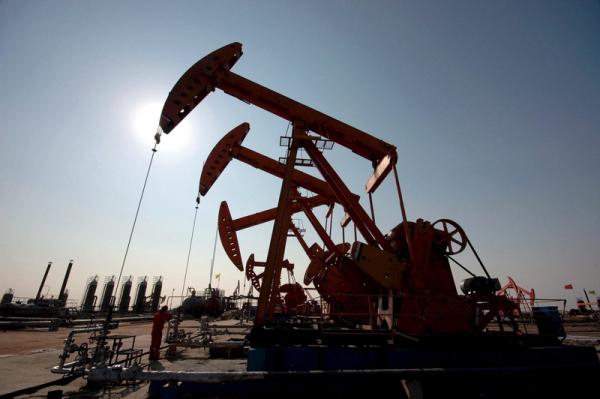 © Reuters. Graphic: Boom, bust or both? The challenge of predicting 2019’s oil market balance
© Reuters. Graphic: Boom, bust or both? The challenge of predicting 2019’s oil market balanceBy Amanda Cooper and Dmitry Zhdannikov
LONDON (Reuters) – In the oil market, balance is a difficult game. Calculating whether the 100 million barrel per day world market is likely in the months ahead to have a surplus or deficit of supply, or be balanced, where supply equals demand, is never simple.
Projections must take into account a host of factors — from world economic growth, refinery operations and changing fuel use patterns on the demand side, to investment patterns, rates of mature oilfield decline, weather, politics, war and OPEC on the supply side.
Working out what the oil balance will look like next year is proving particularly difficult.
“The oil market is basically hardly ever in balance,” said strategist Bjarne Schieldrop of Swedish bank SEB.
“It is either too much or too little. It is very hard to balance it just right. That means that the oil market naturally will move between the two extremes of: low price: demand boost and supply destruction, or high price: supply boost and demand destruction.”
“And since 2005 the middle ground between these two seems to be the $80–$100-a-barrel range where it is neither of the two.”
At $83 a barrel, crude now is at its highest for four years and some big trading houses now think $100-a-barrel crude is likely, a price which may trigger some rationing of demand.
An increase in the value of the U.S. dollar in line with rising U.S. interest rates has made oil more costly for emerging market fuel buyers, including India, China and Indonesia which may curb their imports.
Even so, an average of the three main public agencies that project world oil demand growth — the International Energy Agency, the U.S. Energy Administration and OPEC — is signalling another year of oil demand growth next year.
The average of the three agencies’ forecasts is growth of 1.53 million bpd in 2018 and 1.46 million bpd in 2019, reaching 100.9 million bpd on average next year.
The three on average expect non-OPEC crude supply — they do not even try to predict what OPEC will do — to outstrip global demand next year by 580,000 bpd, similar to this year, leaving OPEC to supply the difference if it chooses to.
(Graphic: Balancing crude oil supply in 2019 – https://reut.rs/2IlJNB7)
KNOWN UNKNOWNS
On the supply side, Iran is the big unknown. Predictions for how much of Iran’s 2 million bpd of exports will be lost to U.S. sanctions range from half a million bpd to 2 million bpd, or most of it’s exports.
There are two quick sources of extra output: the tapping of spare capacity held largely by OPEC leader Saudi Arabia or from those producers that can respond rapidly to higher prices, namely the shale industry in the United States.
Two high-profile consultancies are taking a very different view of the supply-demand balance next year than the three main agencies.
Washington-based Rapidan Group expects a supply surplus of more than one million bpd, triggered by an aggressive U.S. shale supply response to high prices and a hit on emerging market demand.
“We forecast well over 1 million bpd in global surpluses next year … even that may be too small, as emerging market currency collapses may harken a big emerging market growth slowdown next year,” said Rapidan Group president Bob McNally.
“Barring big geopolitical disruptions, we’re hearing an echo of 2013 and 2014 when a tidal wave of prospective non-OPEC supply growth compelled OPEC and Russia to either surrender market share with large proactive cuts or accept big price declines.”
Rapidan expects supply alone to grow faster than total global consumption.
(Graphic: Rapidan forecast for implied global oil supply balance in 2019 – https://reut.rs/2OdvzYu)
At the other extreme, London-based Energy Aspects is projecting a shortfall in supply of 300,000 bpd, with demand curtailed by the impact of trade tariffs.
First though, Energy Aspects is calling for the final quarter of 2018 to have the tightest supply-demand balance in over a decade.
In a note titled “Empty” the consultancy said: “a combination of the steep decline in Iranian exports, a lack of any near-term spare capacity and the resurgence of Chinese teapot (refinery) buying” would cause an unusually tight balance.
That, trading houses such as Mercuria and Trafigura think, may be enough to drive oil prices to $100 a barrel — perhaps in turn sowing the seeds of demand destruction.
So boom, then bust? The history of oil price cycles indicates that is not impossible.
(Graphic: Energy Aspects forecast for global oil demand vs non-OPEC supply – https://reut.rs/2IsbpEy)
(Graphic: OPEC’s battle against US crude oil – https://reut.rs/2OalETv)
Source: Investing.com



























